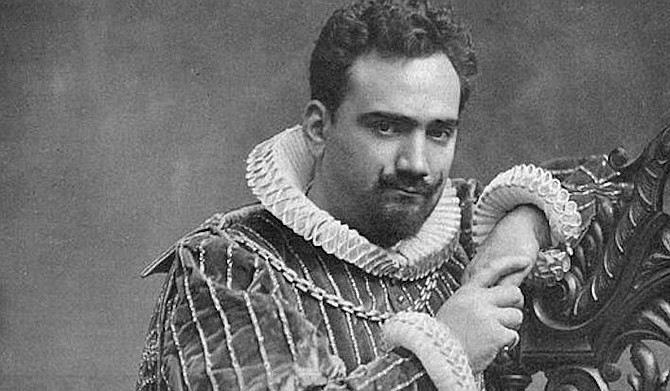 Facebook
Facebook
 X
X
 Instagram
Instagram
 TikTok
TikTok
 Youtube
Youtube

The drive-in Mainly Mozart Festival concerts have concluded. The Mainly Mozart Festival presented four classical music concerts between October 17 and 24.
San Diego Opera is in the middle of four drive-in performances of Puccini’s La Boheme. The final concert is on Sunday, November 1.
I went to three of the Mainly Mozart concerts but I have no plans to attend the opera. I admire the effort San Diego Opera has exerted in producing La Boheme and I think the principal singers are stellar but this just isn’t for me.
I want to emphasize that I am finding no fault with San Diego Opera whatsoever. However, as soon as an opera singer is mic’d up, I’m out. You could resurrect Enrico Caruso and put him in the Sports Arena with a microphone and I’d give it the old “ho-hum not interested.”
I’ve spoken with a few colleagues about the phenomenon, and they concurred. For some reason, there is a huge difference between an amplified orchestral concert and an amplified opera concert.
I’ve written in the past about my disdain for the Metropolitan Opera broadcasts. I’ve seen four different opera productions at the Metropolitan Opera, but I find I can’t make it through one of their live-streams.
Once again, it’s about the voice. I want to hear the voice live and without amplification and definitely without a volume leveler.
I’ll take it a step further. I don’t even like the Italian television opera broadcasts with legendary singers such as Franco Corelli in Pagliacci and Mario del Monaco in Otello. I can listen to recordings of opera all day long but when it comes to sitting down and watching one on a screen, I balk.
I have made it through video productions of live performances such as Tannhauser from the 1978 Bayreuth Festival and Pagliacci with del Monaco in a production from Tokyo in 1961.
The Met broadcasts are of live performances, but they don’t feel the same as the vintage productions I prefer. Modern opera productions feel as if they are trying to be cinematic with an art form that is based on hearing a voice in a theater.
It’s a mystery, but vintage productions feel more like opera to me. They feel as if the voice is primary and everything else is just kind of there to support the narrative that is being sung. The production isn’t the narrative, the singing is.
I understand that I am trapped. Will I ever have an opportunity to attend a vintage opera production? It’s possible. San Diego Opera produced Der Rosenkavalier in 2011 with replica sets of a vintage production.
However, opera is being forced in the other direction. We’re likely to see more drive-in productions before we return to the theater – if we return to the theater.


The drive-in Mainly Mozart Festival concerts have concluded. The Mainly Mozart Festival presented four classical music concerts between October 17 and 24.
San Diego Opera is in the middle of four drive-in performances of Puccini’s La Boheme. The final concert is on Sunday, November 1.
I went to three of the Mainly Mozart concerts but I have no plans to attend the opera. I admire the effort San Diego Opera has exerted in producing La Boheme and I think the principal singers are stellar but this just isn’t for me.
I want to emphasize that I am finding no fault with San Diego Opera whatsoever. However, as soon as an opera singer is mic’d up, I’m out. You could resurrect Enrico Caruso and put him in the Sports Arena with a microphone and I’d give it the old “ho-hum not interested.”
I’ve spoken with a few colleagues about the phenomenon, and they concurred. For some reason, there is a huge difference between an amplified orchestral concert and an amplified opera concert.
I’ve written in the past about my disdain for the Metropolitan Opera broadcasts. I’ve seen four different opera productions at the Metropolitan Opera, but I find I can’t make it through one of their live-streams.
Once again, it’s about the voice. I want to hear the voice live and without amplification and definitely without a volume leveler.
I’ll take it a step further. I don’t even like the Italian television opera broadcasts with legendary singers such as Franco Corelli in Pagliacci and Mario del Monaco in Otello. I can listen to recordings of opera all day long but when it comes to sitting down and watching one on a screen, I balk.
I have made it through video productions of live performances such as Tannhauser from the 1978 Bayreuth Festival and Pagliacci with del Monaco in a production from Tokyo in 1961.
The Met broadcasts are of live performances, but they don’t feel the same as the vintage productions I prefer. Modern opera productions feel as if they are trying to be cinematic with an art form that is based on hearing a voice in a theater.
It’s a mystery, but vintage productions feel more like opera to me. They feel as if the voice is primary and everything else is just kind of there to support the narrative that is being sung. The production isn’t the narrative, the singing is.
I understand that I am trapped. Will I ever have an opportunity to attend a vintage opera production? It’s possible. San Diego Opera produced Der Rosenkavalier in 2011 with replica sets of a vintage production.
However, opera is being forced in the other direction. We’re likely to see more drive-in productions before we return to the theater – if we return to the theater.
Comments